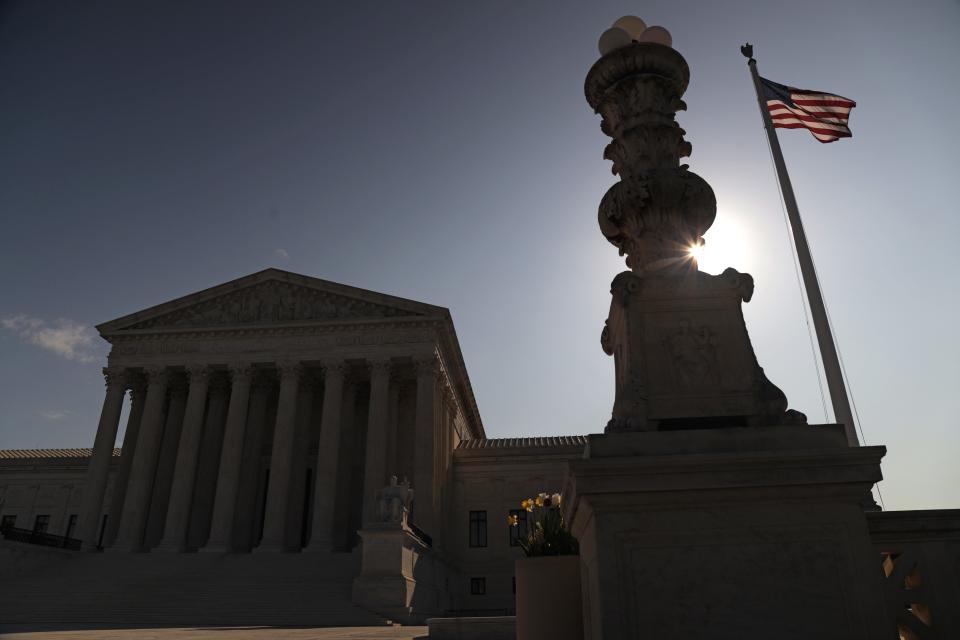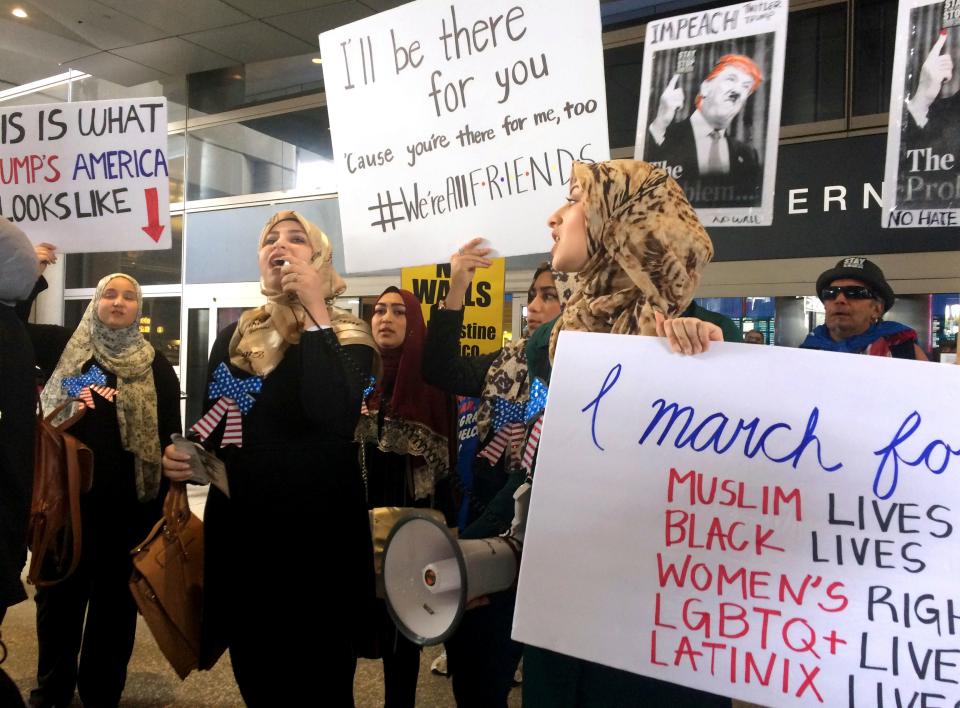Supreme Court makes historic change to hear oral arguments over the phone and stream them live
WASHINGTON – The Supreme Court next week begins hearing oral arguments over the phone – a small step for social distancing, but a giant leap for the justices.
For decades, the court has ignored most of the technological and transparency advancements adopted by other branches of government. Even as lower federal and state courts began live-streaming and broadcasting sessions for public consumption, the highest court in the land remained cloistered.
Cameras in the court? "Over my dead body," former Associate Justice David Souter once said. And not only was live audio shunned – it was big news in legal circles a decade ago when the justices agreed to release recordings of their oral arguments once a week, rather than once a year.
It took a global pandemic to shake things up.
In early March, a week after nursing home residents began dying of the coronavirus in Kirkland, Washington, the justices were still hearing cases inside their marble courtroom. Two weeks later, they closed the building, moved their private conferences remote and postponed further hearings.
When Supreme Court Marshal Pamela Talkin cries "Oyez! Oyez! Oyez!" at 10 a.m. sharp Monday, she will be using Alexander Graham Bell's invention of 1876, but with a twist: C-SPAN, which came along a century later, will carry two weeks of arguments live.
More: These are the most important decisions before the Supreme Court this year
“COVID-19 was able to do in two months what C-SPAN has been trying to get the court to do for 35 years,” says Bruce Collins, the public affairs network's general counsel.

The 25 lawyers who will argue from land lines rather than the Supreme Court lectern have been preparing in unusual ways. Dry runs known as moot courts are by phone rather than in faux courtrooms. Telephonic hearings before lower courts have proven to be good practice.
"These are uncharted waters here," says Roman Martinez, an appellate lawyer who will argue one of the first cases. "This is sort of a brave new world for all of us."
For a court that clings to tradition more than the British monarchy – where male government lawyers wear morning coats, quill pens pass for souvenirs and e-mail has increased only because of social distancing – its choice of telephonic hearings came as a surprise to many.
"I definitely think there are risks on the technological side," says Gabe Roth, executive director of Fix the Court, which advocates for increased transparency. Lower federal and state court oral arguments recently featured a judge being dropped from the call and another whose mute button necessitated a recess.
"I think there are going to be hiccups," Roth says. "We’re all going to have to be a little bit charitable."
No 'pomp and circumstance'
When a panel of the U.S. Court of Appeals for the 9th Circuit heard an emergency challenge to President Donald Trump's travel ban against several majority-Muslim countries early in 2017, it did not have time to meet in person. So the three judges and two lawyers were joined by phone from Arizona, California, Hawaii, Washington state and Washington, D.C.
Washington state Solicitor General Noah Purcell, who won a short-lived victory in that case, learned the power of technology when friends as distant as the New York City subways listened live.
“It was remarkable to me how many people I heard from,” Purcell recalls.

Now he's two weeks away from arguing – at 7 a.m. PT on May 13 – that the men and women appointed as presidential electors should be required to vote for the winner of the state's Nov. 3 election, rather than going rogue.
“If we’re going to dramatically change the role of electors, obviously everyone should know that before the election,” Purcell says.
The day before on May 12, the justices will hear the biggest cases of the two-week foray into telephonic technology when President Donald Trump's lawyers seek to keep his tax returns and financial records from congressional investigators and New York prosecutors.
Listeners won't have to wait long to hear Chief Justice John Roberts, a potential swing vote, because his turn to question four lawyers in the two cases will come first. But Trump's closely watched high court nominees, Associate Justices Neil Gorsuch and Brett Kavanaugh, will go last in the seniority pecking order.
Perhaps because it's a brave new world, the court will kick off the phone hearings Monday, May 4, with a less important case: an effort by the travel website Booking.com to trademark its name. Appellate lawyer Lisa Blatt, a veteran of 39 high court arguments, will represent the company.
By May 6, U.S. Solicitor General Noel Francisco and a highly renowned predecessor, Paul Clement, who has argued 101 Supreme Court cases, will be on the horn to argue that the Affordable Care Act cannot force religious objectors to provide insurance coverage for contraceptives.
An hour later, Martinez will try to convince the justices that political consultants and pollsters have a First Amendment right to target cellphones with recorded calls.
“The most important time for core political speech is in a run-up to an election,” Martinez says. For his first telephonic argument before the high court, he plans to leave home for his Washington, D.C., office.
For Eric Rassbach, senior counsel at the Becket Fund for Religious Liberty, it will be his first Supreme Court argument ever the following week. To argue that religious schools can fire teachers because they have "ministerial exceptions" from job discrimination laws, he plans to use a podium as if he was in court on Monday, May 11.
"I am going to miss the pomp and circumstance of it," Rassbach says. "The parry and thrust of argument will obviously be different."
Appellate lawyer Ian Gershengorn, who served as the Obama administration's acting solicitor general in 2016, will argue a Native American land dispute the same day. He will miss seeing "the non-verbal cues from the justices – who’s frowning, who’s smiling, who’s grimacing.”
A similar Oklahoma case was argued in 2018 but never decided, presumably because Gorsuch was recused, leaving only eight justices and, therefore, a likely tie vote.
"All eyes will be on Justice Gorsuch," Gershengorn says, before recalling the medium.
"All ears will be on Justice Gorsuch," he says.
Hard to go back?
Nearly all federal appeals courts already are providing live access to remote oral arguments, as are many state supreme courts. On Tuesday, the U.S. Court of Appeals for the District of Columbia Circuit broadcast a three-hour hearing on two major separation-of-powers cases involving disputes between the Trump administration and the U.S. House of Representatives.
At the Supreme Court, however, the justices only rarely relent on releasing audio recordings later in the day – the first time being after hearing the presidential election case Bush v. Gore in 2000.
"The federal courts, including the Supreme Court, must often introduce new technologies at a more measured pace than other institutions, especially those in private industry," Roberts said in his 2014 year-end report. "They will sometimes seem more guarded in adopting cutting-edge innovations, and for good reason, considering some of the concerns that the judiciary must consider in deploying new technologies."
Now that social distancing has forced the court's hand, however, advocates and attorneys expect more of the same in the future.
"I think there will be a lot of pressure for the Supreme Court to maintain the practice," Fix the Court's Roth says.
“Once you cross that bridge, it does seem a little hard to go back, assuming everything runs smoothly," Gershengorn says. "It’s harder to cut back on access once you’ve given it.”
This article originally appeared on USA TODAY: Supreme Court justices, lawyers prepare for live telephone hearings

